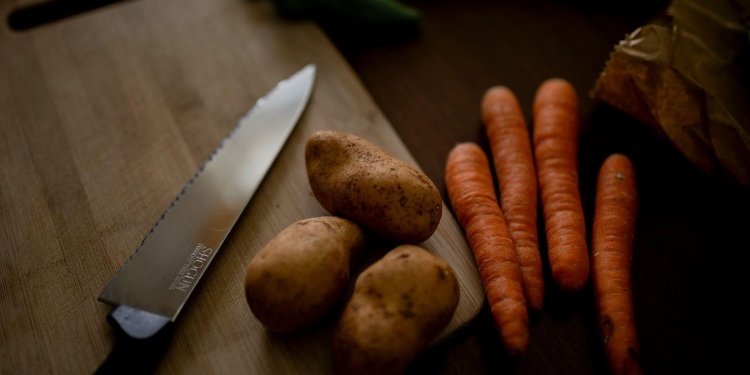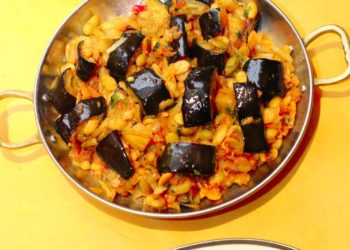- Efficient food preparation starts with organizing tools, ingredients, and tasks for a logical workflow that saves time and reduces stress.
- Using essential tools and adopting techniques like mise en place can significantly improve speed and consistency in the kitchen.
- Maintaining a clean workspace and reviewing routines regularly helps refine the process and avoid common mistakes.
- Small, thoughtful changes in your workflow create a smoother, more enjoyable cooking experience over time.
Cooking is an art, but the process behind it often feels more like a juggling act. Between organizing ingredients, managing tools, and hitting deadlines, food preparation can get chaotic fast. But what if it didn’t have to be this way?
In this post, we’ll explore how to streamline your kitchen workflow, giving you tips and insights to save time, reduce stress, and keep things running like clockwork. From smart organization strategies to must-have tools, you’ll discover how to bring more efficiency—and enjoyment—into your cooking routine. Let’s get started!
Why Workflow Matters in Food Preparation
A solid workflow can make or break your cooking experience. When everything is in its place and tasks flow naturally, you’ll notice improvements in everything from speed to food quality.
Good workflow minimizes waste—both in ingredients and effort. It ensures you use your time wisely and focus on what matters most: creating delicious meals. Plus, a well-organized kitchen means less frustration when you’re in the middle of prepping, chopping, and seasoning.
Key elements to a great workflow include:
- Organizing tools and ingredients within reach.
- Following a logical order of tasks (think prepping before cooking).
- Simplifying repetitive actions with the right techniques or shortcuts.
When you put these pieces together, food preparation becomes not just easier but more enjoyable.
Tools That Simplify Food Prep
No matter how skilled you are, the right tools make all the difference in the kitchen. They save time, reduce effort, and help you achieve consistent results. Among these, a professional meat slicer machine stands out as a game-changer for slicing meats evenly and efficiently, perfect for both professional chefs and serious home cooks.
High-quality tools are more than just gadgets—they’re investments in making your workflow smoother. Here are a few examples:
- Sharp knives for precision and speed.
- Appliances like food processors to handle repetitive tasks.
- Specialized tools like slicers or peelers to ensure uniform results.
Choosing reliable equipment can transform even the most mundane kitchen tasks into a breeze. As you craft your workflow, think about the tools that will complement your cooking style and elevate your efficiency.
Steps to Craft a Smooth Workflow
Crafting a seamless kitchen workflow isn’t just about having the right tools—it’s about setting up your space and routine for maximum efficiency. With some simple adjustments, you can transform the way you approach food preparation.
Start with a layout that works for you. Arrange your tools, ingredients, and appliances in a logical flow. For example, keep your cutting board near the sink and trash bin to make peeling and washing veggies easier. Place your most-used utensils within arm’s reach of your main workspace.
Adopt a mise en place mindset. This French culinary practice—meaning “everything in its place”—involves prepping ingredients before you start cooking. Chop, measure, and organize everything you need beforehand, so you can focus on cooking without interruption.
Streamline repetitive tasks. When you’re prepping large quantities, batch tasks like slicing, peeling, or chopping to save time. Using the right tools, such as a mandoline slicer or a food processor, can speed up the process even more. Small steps like these can shave minutes off your workflow, making food prep a smoother, more enjoyable experience.
Maintaining Consistency in Your Process
Even the best workflows need regular tweaking to stay effective. Consistency is key—not just in your habits, but in how you organize and evaluate your process.
Develop routines that work for you. Whether you’re a home cook or a pro, sticking to a consistent routine makes tasks second nature. For example, always clean as you go, keep ingredients in the same spot, and start with the same prepping steps.
Review and refine your process regularly. Take a few moments after each cooking session to evaluate what went well and what didn’t. Did you waste time looking for tools? Were there bottlenecks in your workflow? Small adjustments can lead to big improvements over time.
Train others if needed. If you work in a team or cook with family, ensure everyone understands the workflow. Teach them how to follow your system for efficiency and avoid duplication of tasks or confusion. A cohesive team makes food preparation faster and stress-free.
By focusing on consistent habits and continuous improvement, you’ll maintain a kitchen workflow that supports both your creativity and your productivity.
Common Pitfalls and How to Avoid Them
Even with the best intentions, certain missteps can throw off your kitchen workflow. Identifying these pitfalls early ensures you can avoid them and keep things running smoothly.
Overcomplicating the setup. While it’s tempting to pack your kitchen with every gadget and tool, clutter can slow you down. Stick to essentials and store rarely used items out of sight to keep your workspace clear.
Skipping the prep work. Diving straight into cooking without preparing your ingredients can lead to chaos and wasted time. Make it a habit to organize and measure everything before starting. You’ll thank yourself when you’re not scrambling to chop veggies mid-recipe.
Failing to clean as you go. A messy workspace can interrupt your flow and increase stress. Build the habit of cleaning up small messes and washing tools immediately after use. It’ll save you from a daunting pile of dishes later.
Avoiding these common mistakes will help you maintain a productive and stress-free food preparation experience.
Conclusion
Streamlining your workflow for food preparation doesn’t have to be overwhelming. With thoughtful organization, the right tools, and consistent habits, you can transform how you work in the kitchen.
By addressing common pitfalls and refining your process over time, food prep becomes more efficient and enjoyable. So why not take a step today toward creating a kitchen workflow that works for you? It’s all about small changes that make a big difference.
David Prior
David Prior is the editor of Today News, responsible for the overall editorial strategy. He is an NCTJ-qualified journalist with over 20 years’ experience, and is also editor of the award-winning hyperlocal news title Altrincham Today. His LinkedIn profile is here.













































































